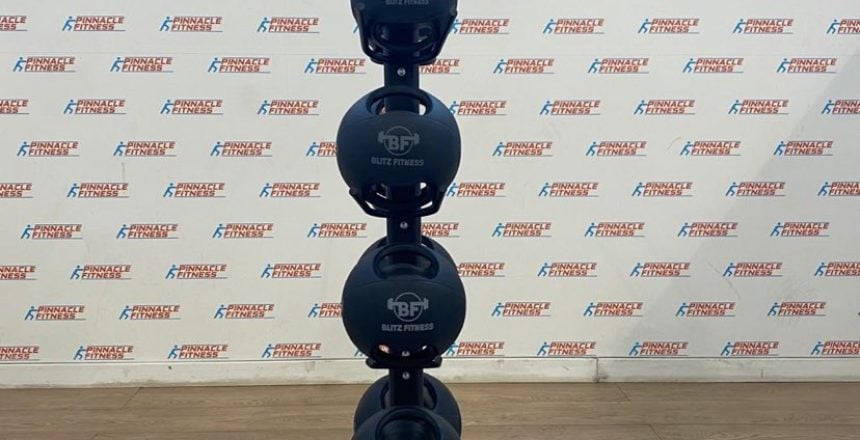
When you’re choosing an exercise ball for your commercial gym or home gym, you’re presented with several options. But it’s not always obvious which type of ball is best for your needs.
First of all, let’s take a look at what exercise balls actually are. They are essentially a type of free weight, like dumbbells, but they come in the form of a ball. They can be used with different types of exercises like throwing where other free weights would not be suitable.
Exercise balls can be used for balance, flexibility, strength training and more. So, what exactly is the difference between them?
Slam balls, also called dead balls, are usually filled with sand. They are covered with a durable rubber layer, and the surface is easy to grip.
These are the heaviest of the three types of exercise balls, and they are also the toughest. This is because they are designed to be lifted up and thrown repeatedly into the ground. Because slam balls do not bounce, they can be safely thrown down in this way.
There are several exercises you can do with a slam ball. The most common exercise is to lift it up above your head and throw it down again, then squat to pick it up and continue to do this repeatedly.
Other exercises involve holding it into your chest and performing jumps or squats before slamming it down. It’s also good for lateral throws and squat throws.
Medicine balls, also known as med balls, have been around for over a century. They start at about 1kg and they sometimes have handles built into them.
They are balls filled with air, and they have a strong outer layer made of rubber that gives them weight. They are very heavy, and while they do not bounce much, they are not suitable for slamming into the ground like slam balls.
Medicine balls are ideal for rehab as well as strength-and-conditioning training. They are also good for basic lifting exercises and core work.
Wall balls are filled with rubber granules that provide them with more bounce as well as good weight balance. They have a soft outer layer that helps to absorb impact, and they are larger than medicine balls and slam balls.
Wall balls are used for explosive power training, and they are designed to be thrown fast. Their larger diameter means they create more resistance, so you must work hard to throw them.
They can be used for overhead throws, side throws and improving coordination. They are safer to throw and catch than slam balls, and they are also good for wall throws, wall squats and crunch throws.
It all depends on the exercise you want to do. What are you training for and what do you enjoy doing in the gym? Slam balls can be great fun, but if you want to develop explosive power, wall balls are better. You can make use of all three, of course, but remember that they all have slightly different purposes.
Wall balls, slam balls and medicine balls can easily be integrated into your workouts. They are common in commercial gyms but because they are fairly small, they are excellent for home gyms too.
Consider which one would be right for you or get one of each. You can choose from a wide range of weights and styles, but just make sure you get one from a reputable fitness brand.

Blog » Gym Equipment Guides » Slam Balls, Medicine Balls or Wall Balls: Which Should You Choose?